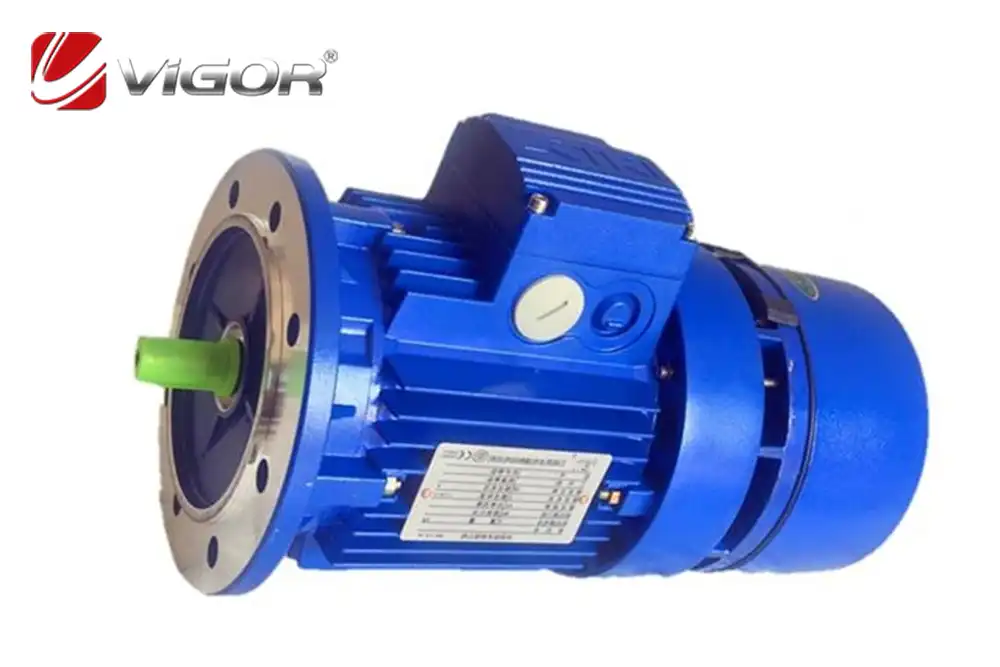
Knowledge
Brake Motor Housing Types, Production and Quality Control
The types, production processes, and key points of quality control for brake motor housings are summarized as follows:
I. Types of Brake Motor Housings
Brake motor housings are an important component of motor structures and are mainly divided into two categories: motor housings and brake housings. Motor housings typically use high-strength, lightweight aluminum alloy materials, which not only have good thermal conductivity but also effectively reduce the overall weight and improve the motor's operating efficiency. Brake housings, on the other hand, are mostly made of wear-resistant and high-temperature-resistant cast iron materials to ensure they can withstand significant mechanical stress during frequent braking. Additionally, these housings have a high protection level, such as IP54 or IP55, effectively preventing dust and moisture from entering and ensuring stable motor operation in harsh environments.
II. Production Processes of Brake Motor Housings
The production process of brake motor housings is complex and meticulous, involving multiple key steps such as casting, machining, and assembly. The casting process is the first step in forming the housing, where molten aluminum alloy or cast iron is injected into molds to create the basic shape of the housing. During this process, precise control of temperature and pouring speed is crucial to ensure the uniformity and density of the internal structure of the castings. The machining process involves precise dimensional processing and surface treatment of the cast housing using high-precision CNC machines and advanced processing technologies to ensure that every detail meets the design specifications. The assembly process involves assembling the various components that have been strictly inspected according to the process flow to form a complete brake motor housing. This step requires high skills and experience from assembly workers to ensure assembly accuracy and overall performance.
III. Key Points of Quality Control for Brake Motor Housings
l Material Quality Control: Materials are the foundation of housing quality. It is essential to ensure that the aluminum alloy and cast iron raw materials used meet national or industry standards and have good mechanical properties and corrosion resistance. Before production, each batch of raw materials undergoes strict chemical composition analysis and mechanical property testing to ensure their quality meets the standards.
l Casting Quality Control: Casting is a critical step in housing production and directly affects the internal quality of the housing. During the casting process, the melting temperature, pouring speed, and cooling time are strictly controlled to avoid defects such as porosity, slag inclusion, and cracks. After casting, the housing undergoes necessary heat treatment, such as annealing or aging, to eliminate internal stress and improve the mechanical properties and stability of the material.
l Machining Quality Control: The machining process has extremely high requirements for the dimensional accuracy and surface quality of the housing. High-precision processing equipment and advanced processing technologies are used to ensure that every machined surface meets the dimensional accuracy and surface roughness requirements of the design. After machining, the housing undergoes comprehensive inspection and testing, including dimensional measurement and surface flaw detection, to ensure that each product meets the quality standards.
l Assembly Quality Control: Assembly is the final step in housing production and directly affects the overall performance of the motor. During assembly, operations are strictly carried out according to the process specifications to ensure that the assembly accuracy and fit clearances of each component meet the design requirements. After assembly, the brake motor housing undergoes functional and performance tests, including braking performance and protection level, to ensure it meets the actual usage requirements.
The types, production processes, and key points of quality control for brake motor housings involve multiple aspects. Vigor is meticulous in every step, strictly controlling quality to ensure that the final product's performance and quality meet the design standards and customer needs.
If you have any questions, demand, related parts development or improve your supply chain, please feel free to contact us atinfo@castings-forging.com




